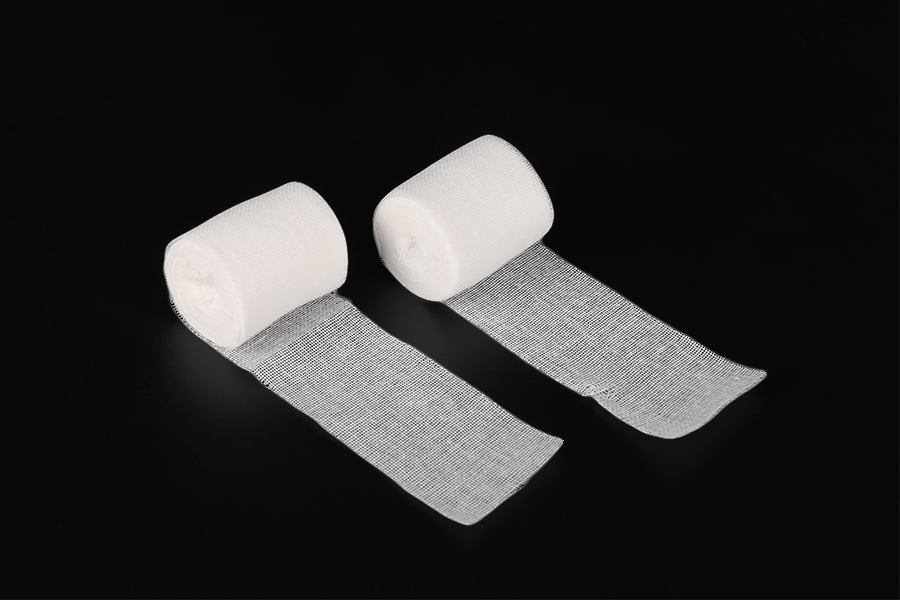The thickness and weave of a gauze bandage roll are crucial factors that significantly impact its effectiveness in wound dressing. Here’s how they contribute:
Absorbency
Thickness: A thicker gauze bandage roll generally has more layers of material, which can absorb more fluids, such as blood or exudate from a wound. This is important for keeping the wound dry and preventing maceration, where excessive moisture can break down skin tissue.
Weave: The weave determines the spacing between fibers. A tighter weave increases the surface area available for absorption, making the gauze more effective at drawing moisture away from the wound.
Breathability
Thickness: While thicker gauze can absorb more, it may also reduce breathability. Breathability is essential for allowing air to reach the wound, which promotes faster healing. Balancing thickness with breathability is key to effective wound care.
Weave: A looser weave allows more air to circulate through the bandage, enhancing breathability. This can help keep the wound environment optimal for healing by preventing excess moisture buildup and promoting oxygen flow.
Flexibility and Comfort
Thickness: Thicker gauze can be less flexible, making it more difficult to conform to certain areas of the body, particularly joints or irregular surfaces. This can impact comfort and the ability to maintain secure coverage of the wound.
Weave: The weave also affects the bandage’s flexibility. A looser weave tends to be more flexible and can contour more easily to different parts of the body, improving comfort and the effectiveness of the dressing.

Protection and Cushioning
Thickness: Thicker gauze provides more cushioning, which can protect the wound from external trauma, pressure, or friction. This is particularly important for wounds that are prone to reopening or are in areas where they might be bumped or rubbed.
Weave: The density of the weave can enhance the protective barrier function of the gauze. A tighter weave offers more robust protection against contaminants, reducing the risk of infection.
Durability and Strength
Thickness: Thicker gauze bandages are generally stronger and less likely to tear during application or when securing the bandage with tape or clips. This durability is important for ensuring that the bandage remains intact and functional over time.
Weave: A tighter weave increases the tensile strength of the gauze, making it more resistant to stretching or tearing. This is crucial for maintaining the integrity of the bandage, especially during movement or in cases where the bandage needs to be changed frequently.
Application and Adherence
Thickness: The thickness of the gauze can affect how easily it adheres to itself or to the wound. Thinner gauze may require additional layers or support to stay in place, while thicker gauze may adhere better but could be bulkier.
Weave: The weave impacts how well the gauze can grip or conform to the wound surface. A balanced weave ensures that the gauze can stay in place without slipping, which is important for maintaining consistent coverage and pressure.
The thickness and weave of a gauze bandage roll directly influence its ability to absorb fluids, allow air circulation, provide protection, and conform to the body's contours. These factors are critical in ensuring effective wound dressing, promoting healing, and preventing complications.

 English
English 中文简体
中文简体








